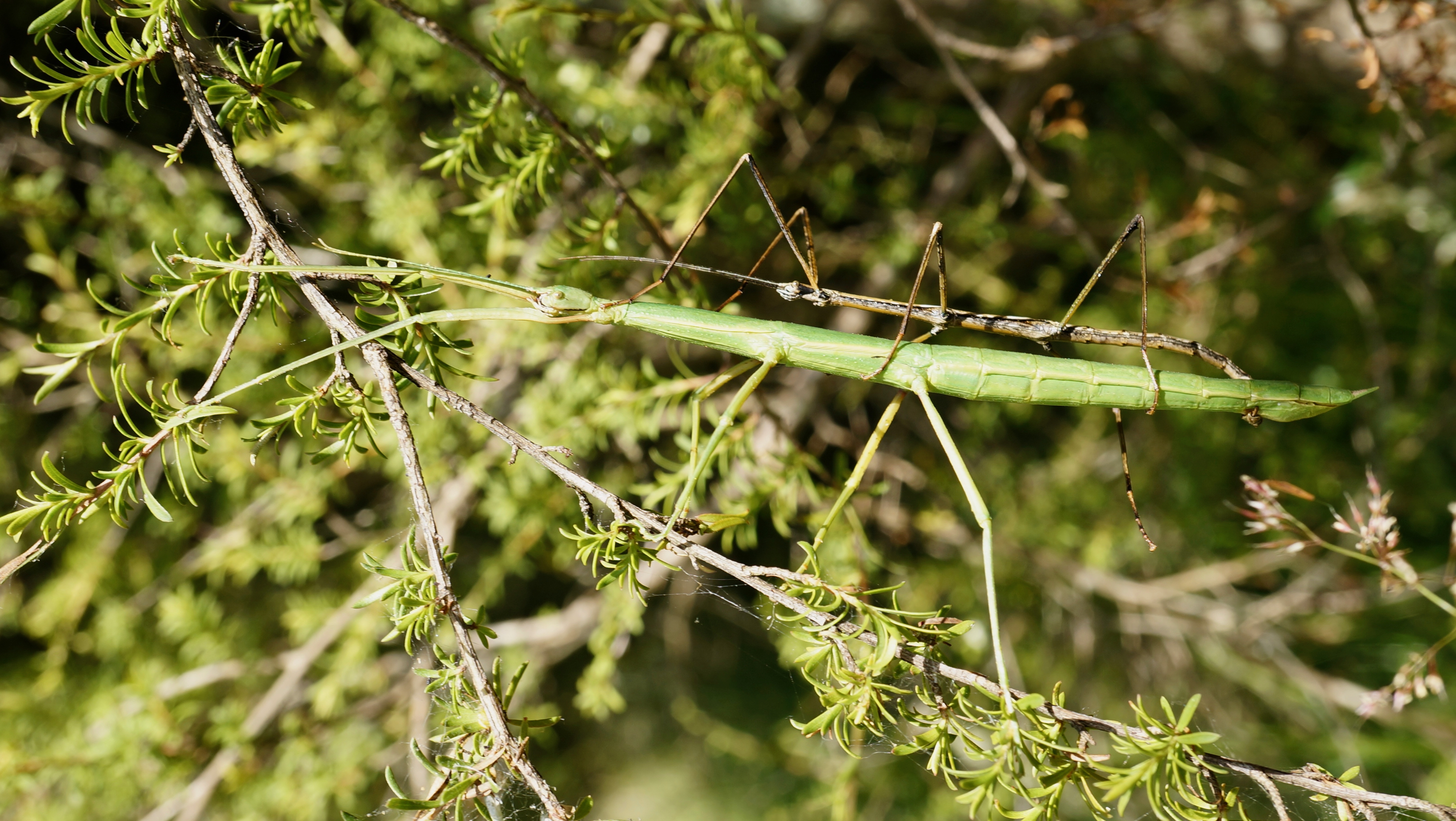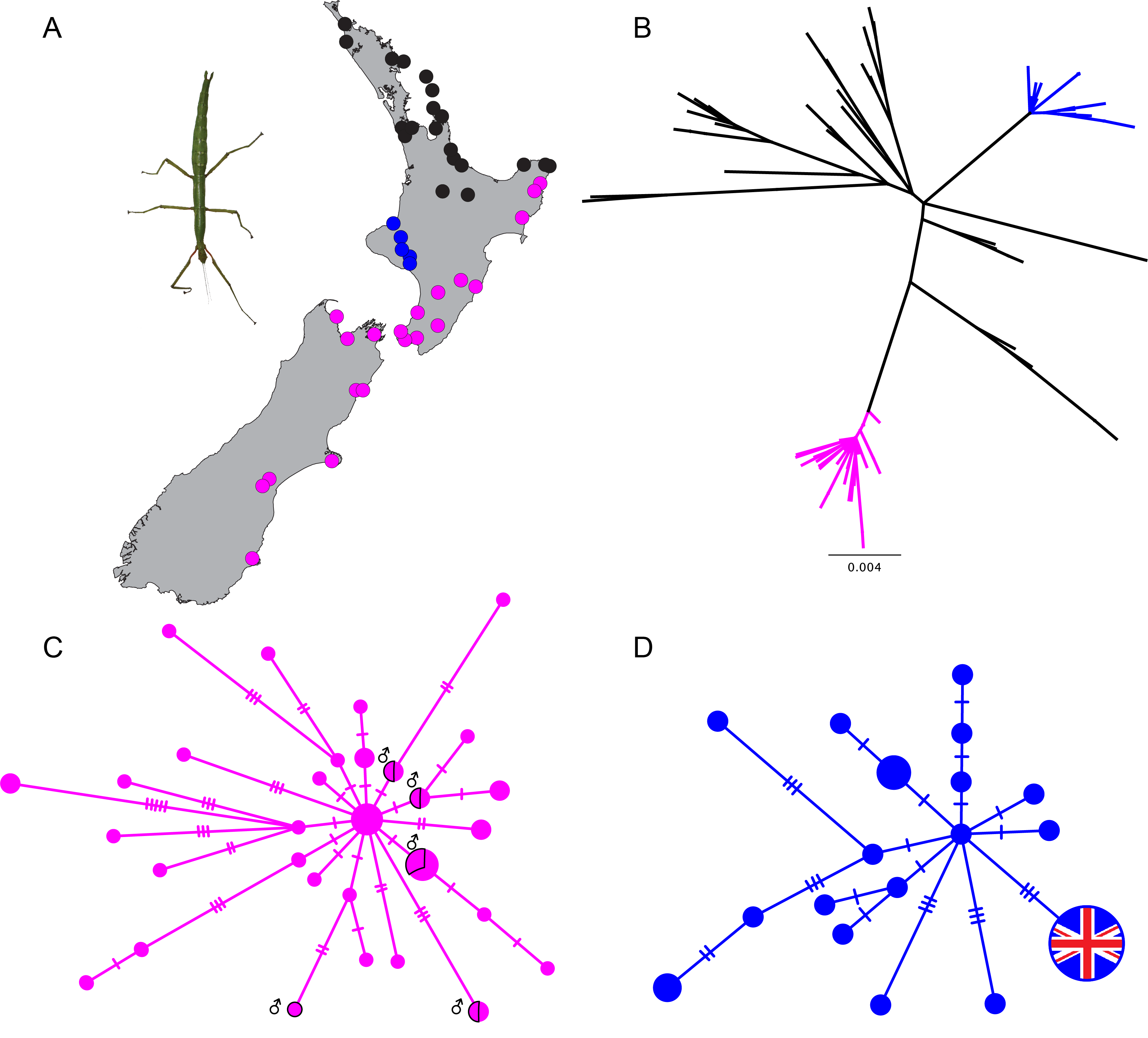What controls the colour of the common mānuka stick insect?
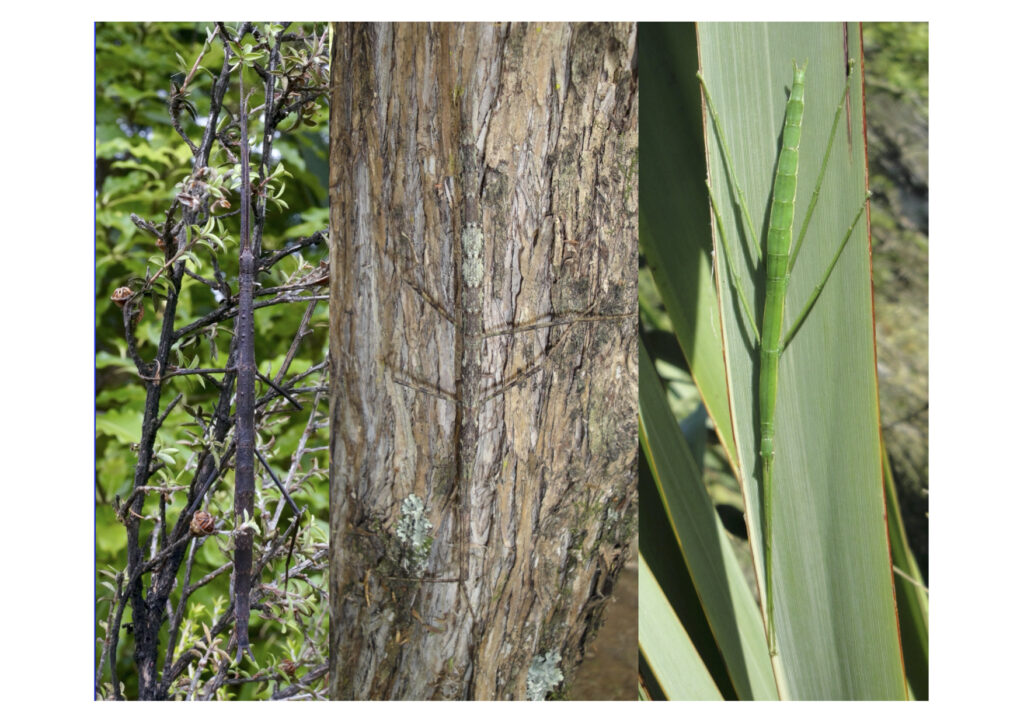
When we see how well-camouflaged individual stick insects are, it is hard not to imagine they have chosen either their hiding place or their skin colour, with care. But stick insects cannot see colour – they don’t know if they are green or brown. The reason they are so hard to see is that their cousins who were visible have been eaten. The only ones left are the ones that were not seen by the warblers and silver eyes and chaffinches and tui and sparrows.
Some stick insects can change colour – as demonstrated by the Indian stick insect Carausius morosus (Mangelsdorf 1926), whose colour changes in response to light levels. The trick this insect uses is the movement of pigment granules in it’s skin (cuticle) that alter light absorption and light scattering (Umbers et al. 2014).
Other stick insects like the North American Timema walking sticks have their colour determined by their genes and variation among individuals within the same species is maintained by selection, recombination and mutation (Comeault et al. 2015; Villoutreix et al. 2020). They cannot change colour to suit their environment.
So, what about rō Aotearoa – New Zealand stick insects? No one knows for sure – but maybe you have an idea? I have made some observations of the common mānuka stick insect Clitarchus hookeri and think that genetics is involved.
Colour variation in captivity suggests genetic rather than environmental differences explain this phenotypic diversity
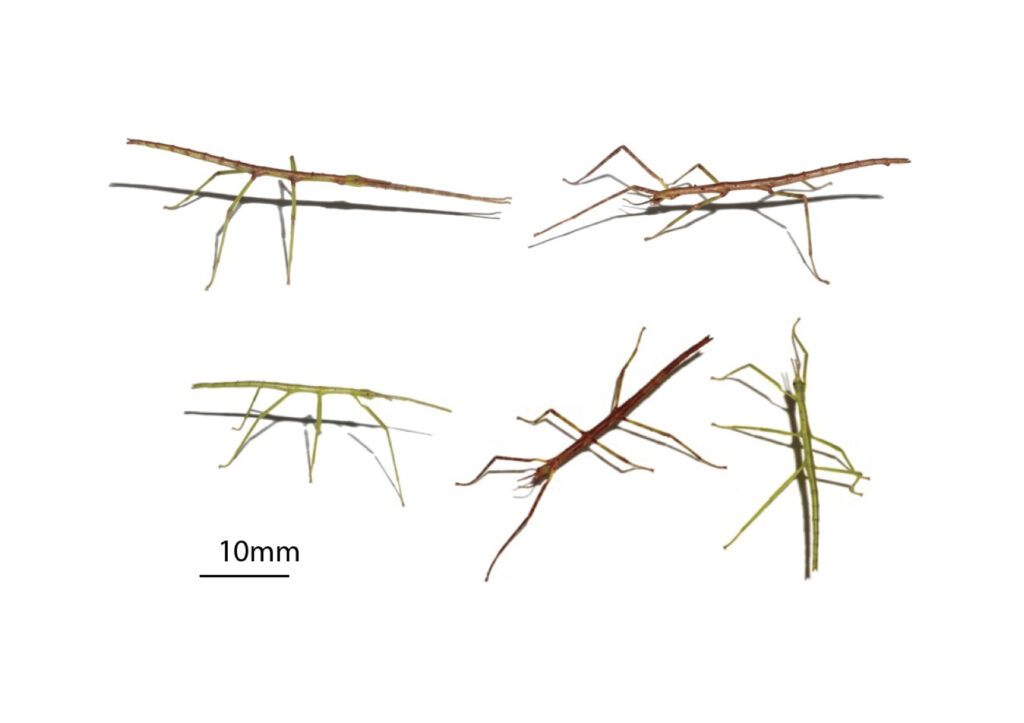
In boxes at home I allowed green Clitarchus hookeri indivudals from Waikato to mate with brown individuals from Whanganui. I collected the eggs that each female dropped and stored them for a few months until the little stick insects hatched. Nymphs were housed in sibling groups and fed mānuka (Leptospermum scoparium) and climbing rātā (Metrosideros perforate).
All my Clitarchus hookeri offspring hatched as green nymphs. Many remained green as they grew and moulted but some changed colour (see figure). Two males changed to brown when about 30mm long, then speckled grey, before moulting to green as adults, their sisters remained green as they grew. Two females changed to brown when about 25mm long, then pale brown. One matured as a green individual, the other pale brown. Of the twelve stick insects I raised until they were adult eight remained green and four changed colour but only one was still brown when adult. In the next generation, produced by crossing siblings, the similar observations were made; some F2 individuals remained green as they grew, some changed to brown when about 30mm before changing to green as adults.
My observations of the colour of F1 offspring provide preliminary data suggesting that the colour of C. hookeri individuals is genetically determined rather than environmental as nymphs were raised in a common environment. However, I also observed that individuals can be different colours at different stages of their growth. Although changing from green to brown has been recorded in this species (Stringer 1970), changing back to green from brown was unexpected. Individual variation in colour will need to be considered when modelling inheritance and selection of this trait. It is possible that my observations could be explained by relatively few alleles at one or two loci. Further work is needed for us to understand the inheritance of colour traits in the common mānuka stick insect Clitarchus hookeri.
References
- Comeault AA, Flaxman SM, Riesch R, Curran E, Soria-Carrasco V, Compert Z, Farkas TE, Muschick M, Parchman TL, Schwander T, Slate J, Nosil P. 2015. Selection on a genetic polymorphism counteracts ecological speciation in a stick insect. Current Biology. 25:1975–1981.
- Mangelsdorf AJ. 1926. Color and sex in the Indian walking stick, Dixippus morosus. Psyche. 33:151–155.
- Morgan-Richards M, Trewick SA, Stringer IAN. 2010. Geographic parthenogenesis and the common tea-tree stick insect of New Zealand. Molecular Ecology. 19:1227–1238.
- Morgan-Richards M, Langton-Myers SS, Trewick SA. 2019. Loss and gain of sexual reproduction in the same stick insect. Molecular Ecology. 28:3929–3941. DOI: 10.1111/mec.15203.
- Salmon JT. 1991. The stick insects of New Zealand. Auckland, New Zealand: Reed.
- Stringer IAN. 1970. The nymphal and imaginal stages of the bisexual stick insect Clitarchus hookeri (Phasmidae: Phasminae). New Zealand Entomologist. 4:85–95.
- Trewick SA, Morgan-Richards M. 2005. New Zealand Wild: Stick Insects. Reed Publishing: Hong Kong.
- Umbers KDL, Fabricant SA, Gawryszewski FM, Seago AE, Herberstein ME. 2014. Reversible colour change in Arthropods. Biological Reviews. 89:820–848.
- Villoutreix R, de Carvalho CF, Soria-Carrasco V, Lindtke D, De-la-Mora M, Muschick M, Feder JL, Parchman TL, Gompert Z, Nosil P. 2020. Large-scale mutation in the evolution of a gene complex for cryptic coloration. Science 369:460–466.
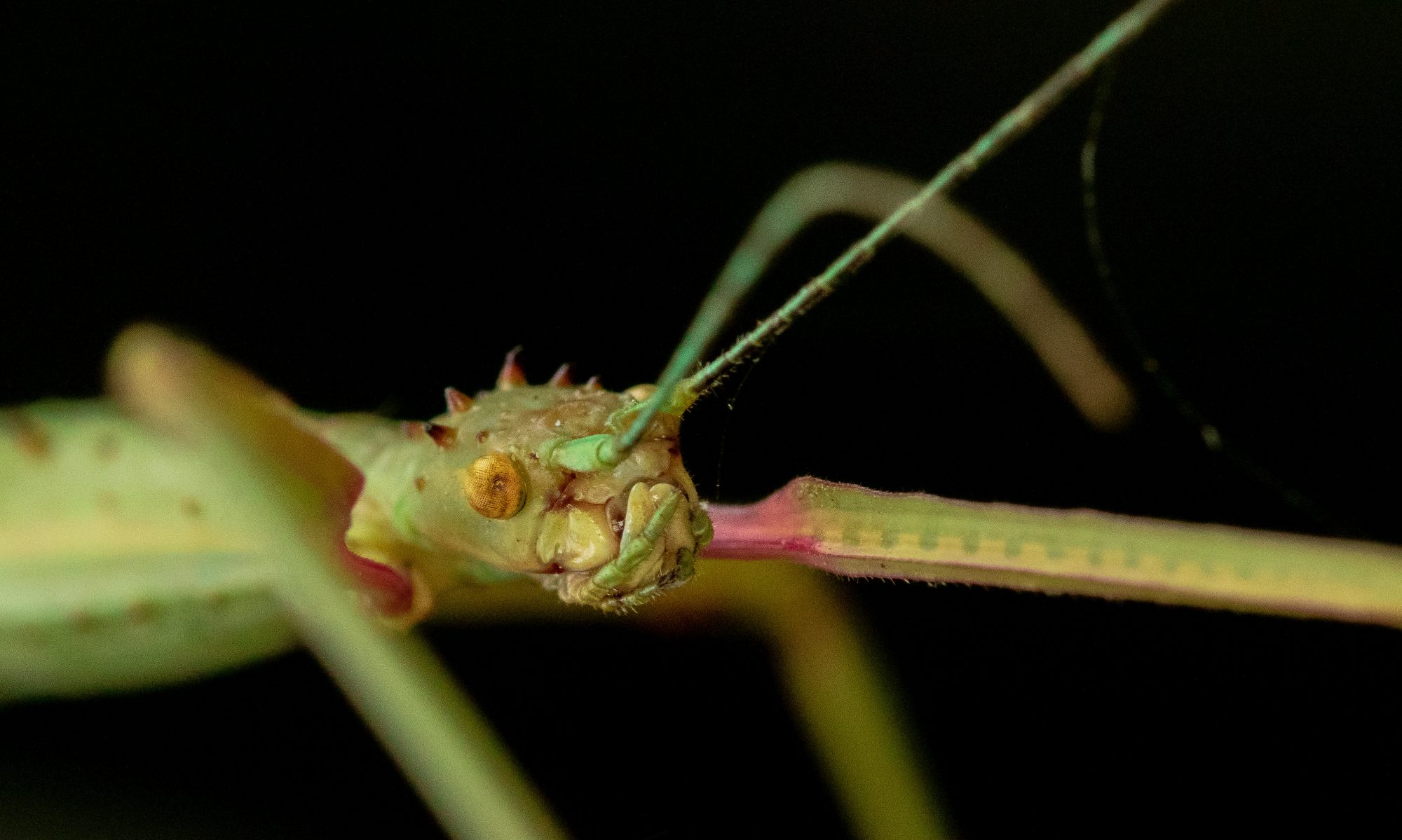


 One group of New Zealand stick insects includes individuals that differ in colour, size, and shape. In particular the number and size of spines they have varies among individuals. This group (genus Acanthoxyla) includes several described species, although in this case defining species is difficult. All are female, which means all come from self-fertile eggs produced by one parent (the mother). Hatchlings grow up to look like their mums, so are effectively clones.
One group of New Zealand stick insects includes individuals that differ in colour, size, and shape. In particular the number and size of spines they have varies among individuals. This group (genus Acanthoxyla) includes several described species, although in this case defining species is difficult. All are female, which means all come from self-fertile eggs produced by one parent (the mother). Hatchlings grow up to look like their mums, so are effectively clones. Among the many individuals of common and widespread Acanthoxyla (literally: prickly stick) observed in New Zealand, no male has been encountered. Yet. But recently a male belonging to this genus turned up in
Among the many individuals of common and widespread Acanthoxyla (literally: prickly stick) observed in New Zealand, no male has been encountered. Yet. But recently a male belonging to this genus turned up in 